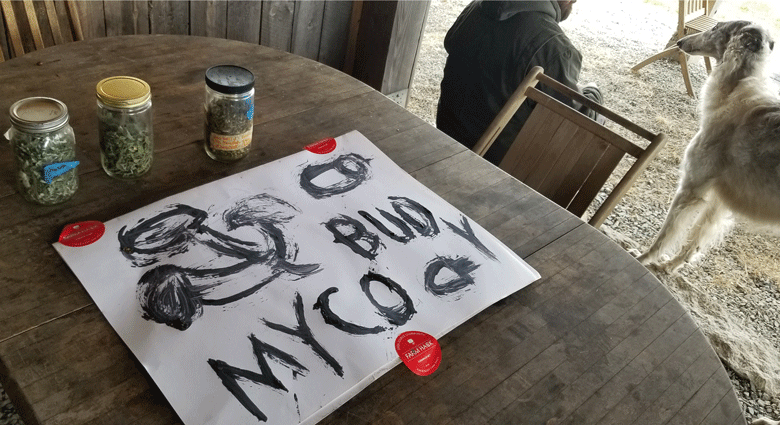You may not be old enough to remember when buoys were carved from wood and lobster traps were hand-built using wood lathe and cloth nets. In the 1970s, wooden buoys were replaced with expanded polystyrene (EPS) plastic foam buoys.
From here two issues arise in terms of plastic pollution in the oceans and shoreline soils.
The first is that once severed, Maine law states no one except the owner of the derelict gear can touch it. This situation makes coastal cleanups difficult.
The second issue is that EPS buoys degrade in sunlight over time and fragment into tiny particles that eventually become nanoparticles in the water column. Filter feeders such as the clams, mussels, and oysters, and fish were found to contain polystyrene nanoplastics according to a 2021 study.
How long do we wait for plastic microfibers to bioaccumulate in the marine food web?
So, while plastic buoys have made life easier for fishermen and fisherwomen, the ecological impacts of using them have not been accounted for until recently. How long do we wait for plastic microfibers to bioaccumulate in the marine food web? The need for new alternatives to plastic fishing and aquaculture gear is now.
Serving as the mycologist—someone who works with fungi—for Ecovative Design, a mycotech company near Troy, New York from 2007 to 2016, I learned what fungi have to teach us about their properties. One of them is buoyancy.
My strong ties to Maine led me to grow the first mushroom buoys using agricultural crop waste and fungal mycelium in 2011 to offer a biologically compatible alternative to EPS buoys. I shared this prototype with Maine’s Lobster Advisory Council and the Department of Marine Resources commissioner at meetings in Hallowell and Stonington in 2012.
After receiving feedback from lobstermen, I tested dozens of agricultural byproducts with a few different fungal species between 2011 and 2016.
Hemp, a marine-resistant fiber traditionally used to make the sails, sheet lines, and caulk for schooners, performed the best in ocean trials completed in 2015 by students at the East Boothbay Nature Center, the Hurricane Island Outward Bound School, and North Haven Community School.
The longevity of untreated mushroom buoys ranged from three to five months in the ocean trials. The addition of one of a half dozen sealants tested prolonged the life of the buoys to five to eight months. Unable to meet these criteria with only 40% bio-based sealants, I paused the research until a time when an environmentally compatible product was developed.
Such a time has arrived.
An invitation from Seaweed Commons and Greenhorns in Pembroke in Washington County to lead two workshops for growing mushroom buoys in April led to deploying nine newly designed MycoBuoys to float oyster trays for the season. The experiment will test an uncoated control MycoBuoy against three buoys coated with a new 100% bio-based non-toxic sealant, a mixture of pine tar and linseed oil and a commercial waterproof sealant.
Our hopes for the near future are modifications of buoy shapes and sizes to meet the needs of stationary kelp and oyster seasonal aquaculture. With success, we plan to equip a facility to use locally sourced hemp fiber as a feedstock for a locally sourced fungal strain as a regional business to produce flotation devices that last a season in the water and subsequently return to the land as compost.
Such an endeavor brings algae and fungi back to the sea where they evolved together. The seasonal exchange of algae, fungi, and plants between farming the sea and farming the land makes for a seaworthy yarn to explain a new circular economy.
Sue Van Hook has studied the taxonomy and ecology of fungi for the past 45 years. She completed undergraduate and graduate degrees in botany and mycology at Humboldt State University. For 18 years she taught at Skidmore College.





